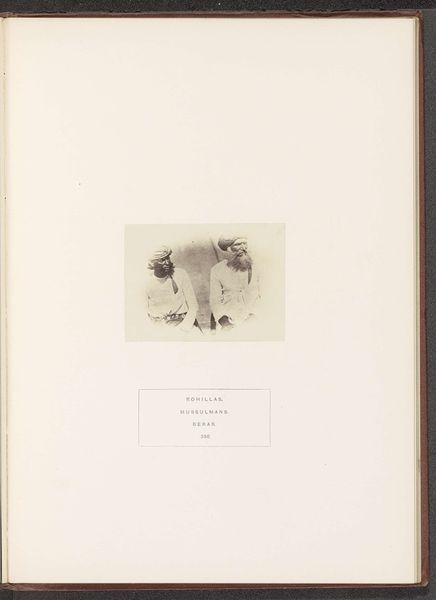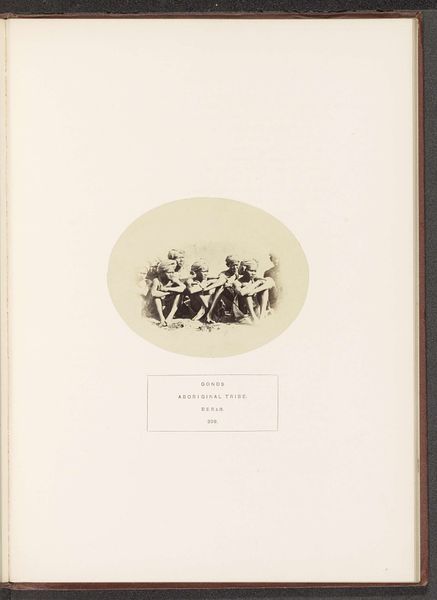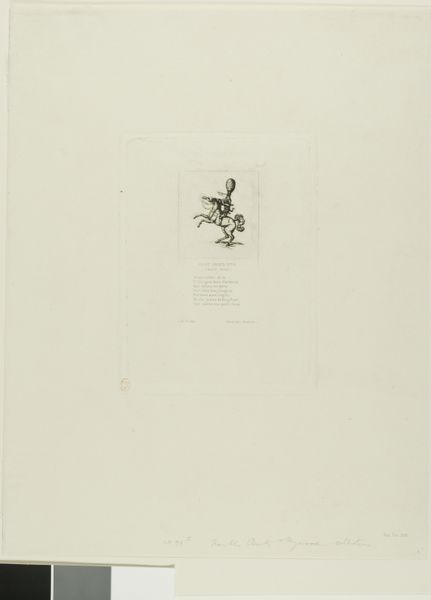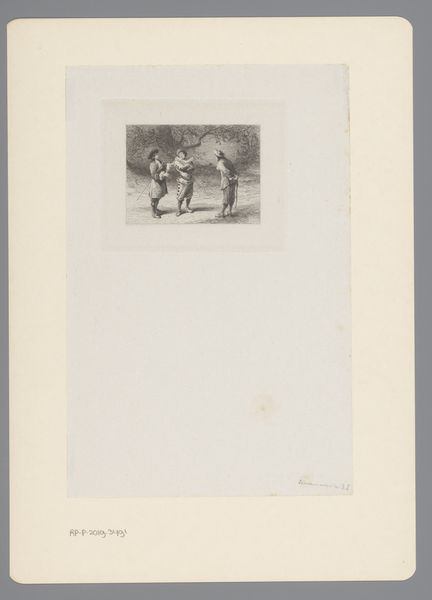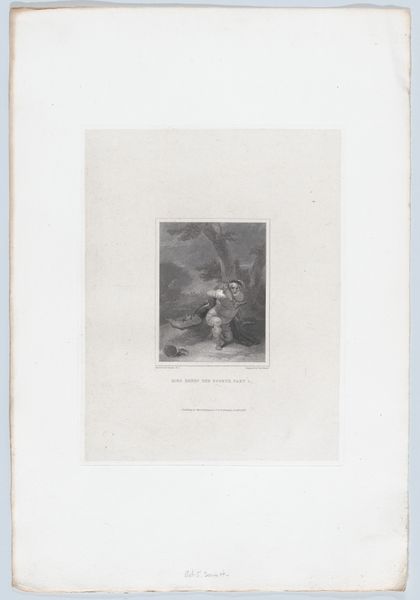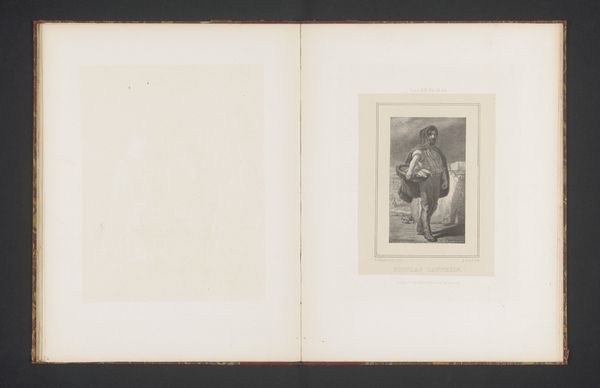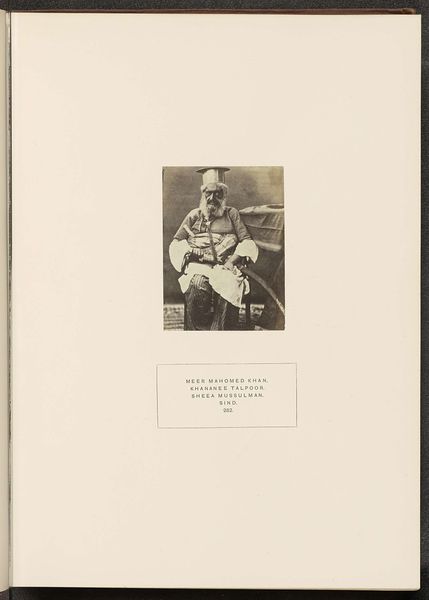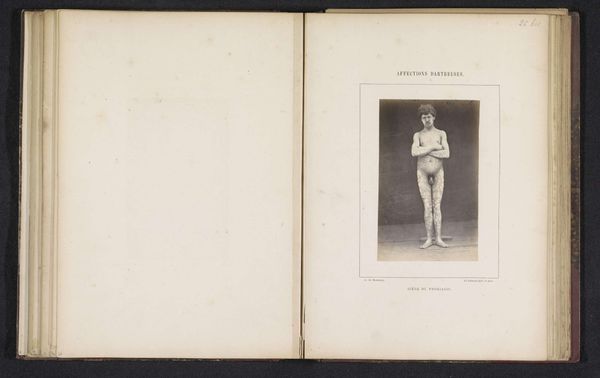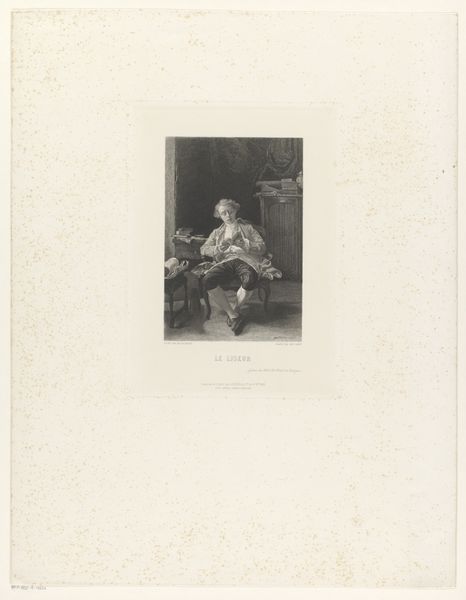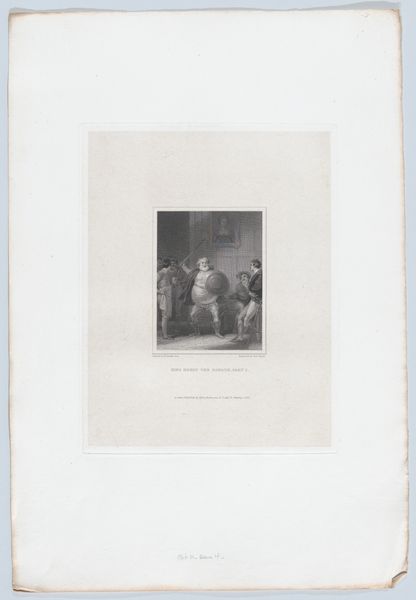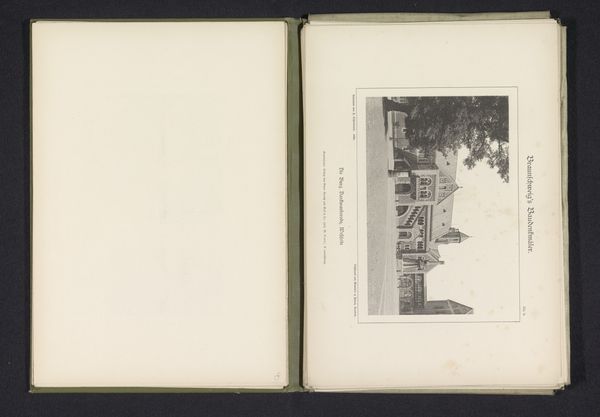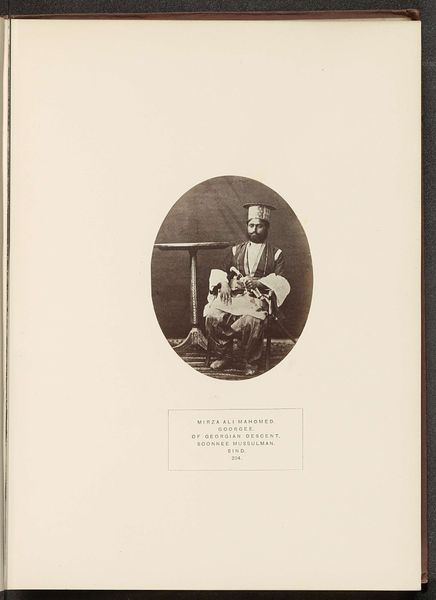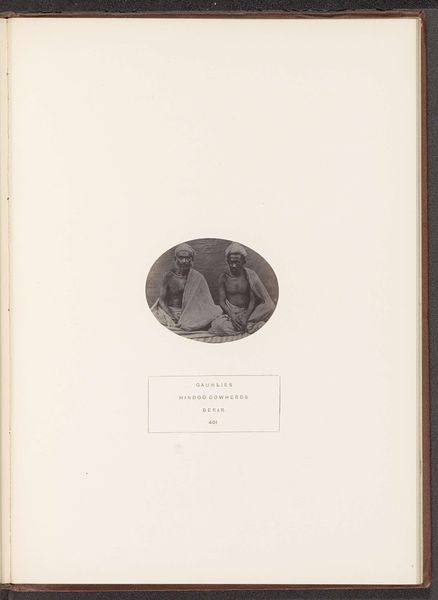
photography, albumen-print
#
portrait
#
photography
#
albumen-print
#
realism
Dimensions: height 84 mm, width 70 mm
Copyright: Rijks Museum: Open Domain
Editor: This is an albumen print from 1862 titled "Portret van een onbekende Dhair man uit Berar" by James Mulheran. I am struck by how intimate this portrait feels despite its historical context. How should we interpret a work like this? Curator: It's crucial to recognize that this photograph exists within a very specific power dynamic. As an albumen print from 1862, we must consider its role in colonial documentation and representation. Who held the camera? Whose story was being told, and for what purpose? Editor: So you're saying we should consider it as part of the visual language of colonialism? Curator: Precisely. It's not just a neutral depiction. Consider the sitter’s posture, and then the label "Outcaste Hindoo Tribe"—these contribute to a specific narrative. The photographer isn't merely capturing an image, he's actively constructing a representation of a particular group of people. Think about the potential implications of circulating this image within the context of British colonial rule. How might it have been used to justify social and political hierarchies? Editor: I see what you mean. The photo, along with the text, reinforces existing stereotypes and power imbalances. It really forces you to think about the gaze behind the camera and the implications of image making. Curator: Exactly. And even now, viewing it through a contemporary lens, we must remain critical of its historical baggage and the ways it might perpetuate those original power structures. Recognizing that photographs such as these contributed to how entire populations were perceived. It is a crucial exercise in understanding the politics of representation and fighting for more diverse and self-authored narratives. Editor: Thanks! That gives me a lot to think about regarding context and the power of representation.
Comments
No comments
Be the first to comment and join the conversation on the ultimate creative platform.
